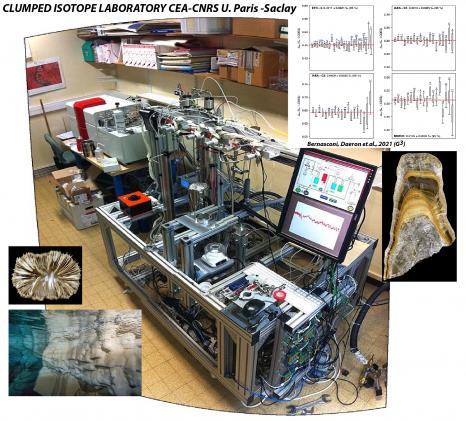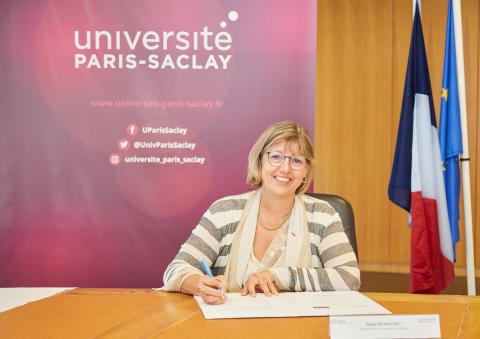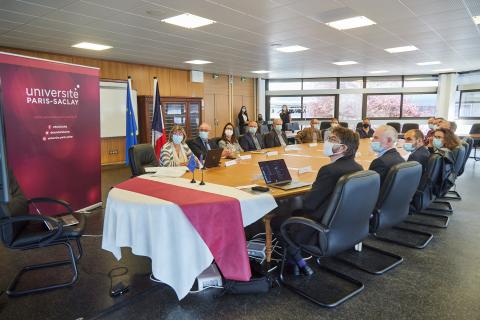
Atoms for Heritage: Université Paris-Saclay becomes an IAEA Collaborating Centre for heritage sciences
Through the Atoms for Heritage Collaborating Centre, the International Atomic Energy Agency (IAEA) and Université Paris-Saclay, alongside its partner organisations, aim to play a key role in the development and application of physical, chemical and digital techniques to study and improve the preservation of heritage objects, whether they are cultural artefacts such as monuments and paintings, or natural objects such as fossils.
Peaceful applications of nuclear science for development and cooperation
The International Atomic Energy Agency (IAEA) has recently designated Université Paris-Saclay as an IAEA Atoms for Heritage Collaborating Centre in heritage sciences. Sylvie Retailleau, President of Université Paris-Saclay, and Najat Mokhtar, Deputy Director General of the IAEA officially signed the convention agreement on Friday 17 September 2021. The signing ceremony was also attended by Xavier Sticker, French Ambassador and Permanent Representative to the United Nations and international organisations in Vienna.
Two years after Université Paris-Saclay co-signed the Paris Declaration on “Heritage, Sciences and Technologies: An Opportunity for our Societies and the Global Economy” at the Institut de France, the launch of this Collaborating Centre for heritage preservation will play a key role in promoting peaceful nuclear applications sustainably for the benefit of society. Preserving heritage means sharing it both culturally and scientifically, building social cohesion, participating in the development of new economic forms with local areas and contributing to peace and stability.
The new centre will focus on five key themes linked to heritage conservation: characterising and dating materials; developing safe analysis methods; analysing and sharing data in accordance with Open Science strategies; educating and raising awareness among the public and future generations about heritage issues; and combatting the illicit trafficking of heritage objects.
The support of the IAEA will facilitate the hosting of international scientists, curators and technical personnel who will all come to Paris-Saclay for training, creating opportunities to establish and intensify international research collaborations through the arrival of experts from around the world as part of the University’s programmes.
A unique ecosystem of networks and infrastructure
Université Paris-Saclay is one of the world’s main sites for the study of world heritage materials, thanks to the involvement of teams from:
– the national centre for Carbon-14 dating at the LSCE Laboratory, Saclay CEA Centre (CNRS/CEA/UVSQ)
– the IPANEMA Laboratory at the SOLEIL synchrotron (CNRS/MC/UVSQ/MNHN)
– the ion beam and X-ray accelerator platforms at the Laboratory of the Physics of the Two Infinities Irène Joliot-Curie (CNRS/UPSaclay)
– the PANOPLY platform (UPSaclay/CNRS/CEA/UVSQ)
– the PPSM Chemistry Laboratory at ENS Paris-Saclay (CNRS/ENS Paris-Saclay)
– the Heritage and Ancient Materials DIM research network from the Île-de-France region
– the European Research Infrastructure for Heritage Science (E-RIHS)
– the teams working on the upcoming opening of a regional conservation and creation centre for the Centre Pompidou in Massy, close to the University.
The Collaborating Centre will work closely with three of the University’s Graduate Schools (Humanities and Heritage Sciences, Physics and Chemistry), and in coordination with two interdisciplinary programmes (The Interdisciplinary Institute of Materials and Palabre).



